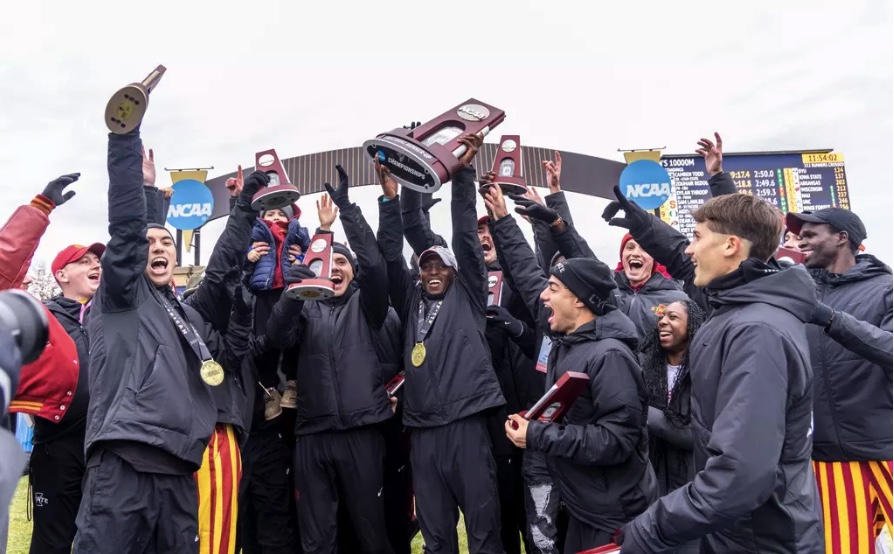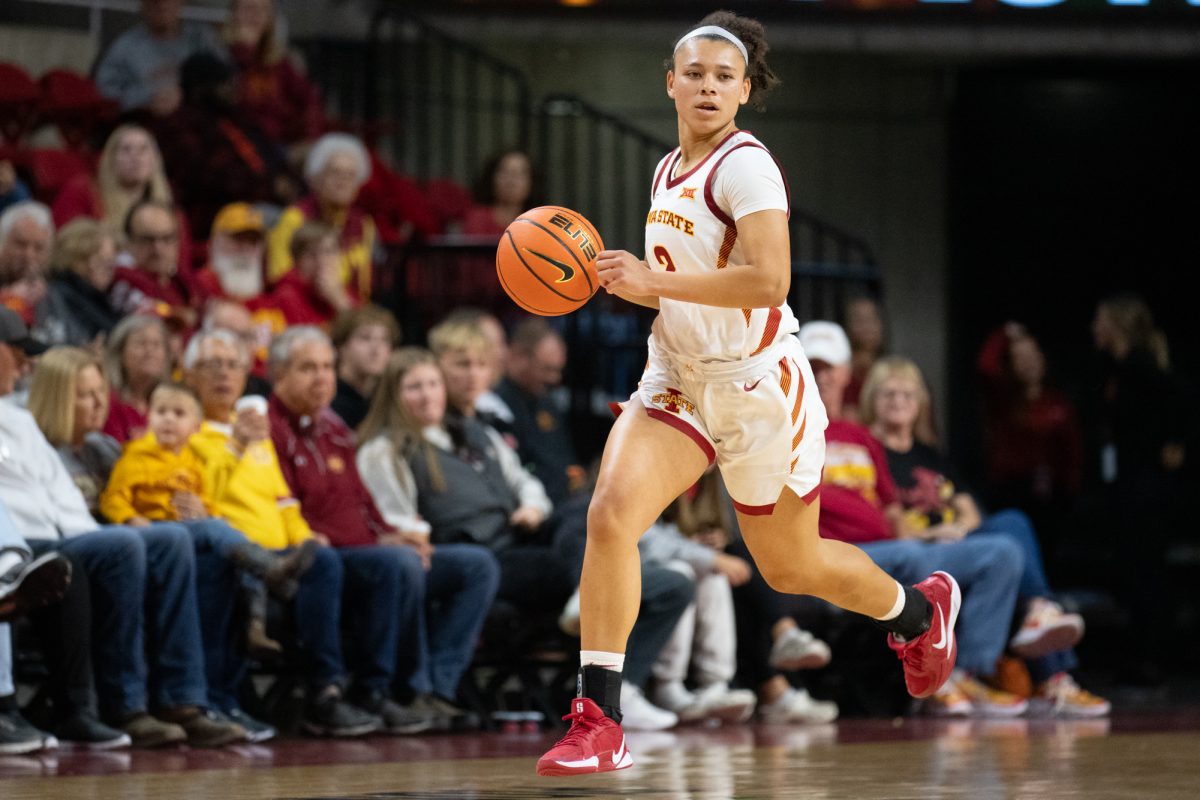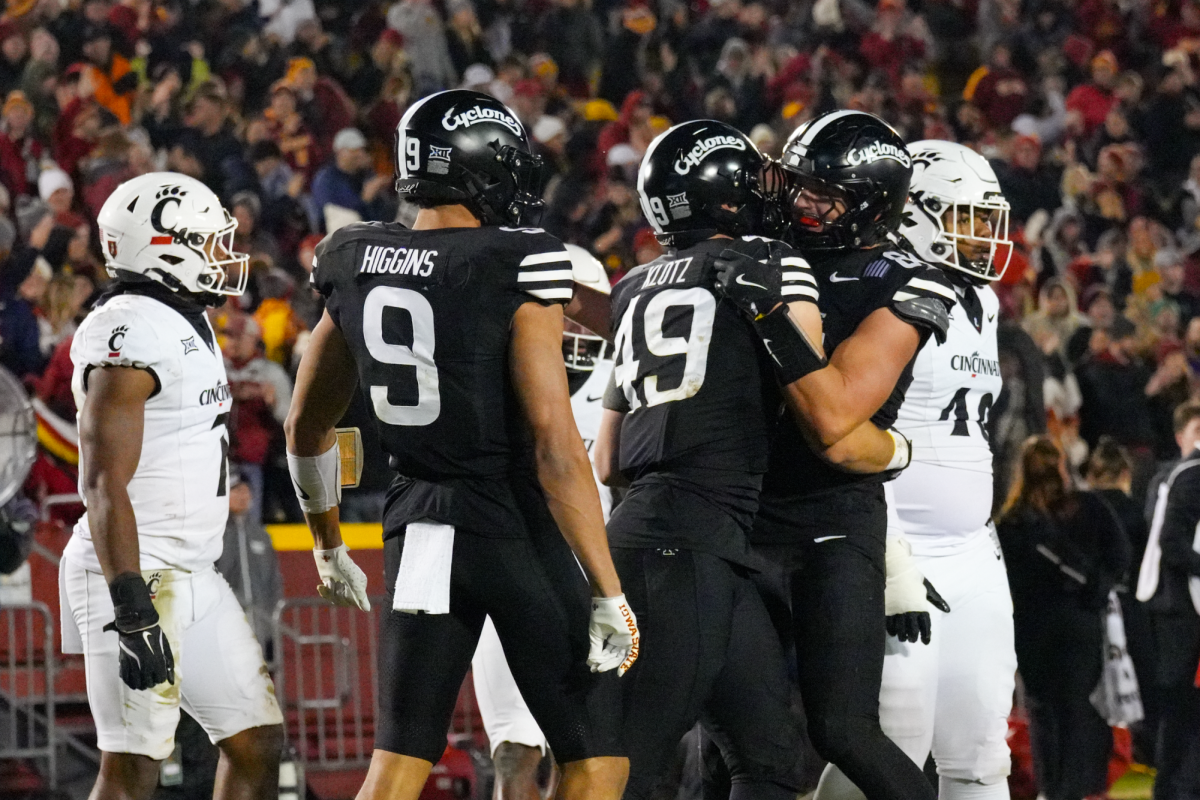Students successfully launch vertical aircraft

Engineering students prepare Voo Doo, a small autopilot-capable plane, for a second test run on Wednesday at the Beef Cattle Nutrition Farm. The students have been working on the project from the design phase starting in the fall 2008 semester. Currently, they are working on calibrating the plane to be able to fly itself, which is a long process and has met with several kinks. Overall, the students believe that they have had some good runs, and despite setbacks, they have learned a good deal. Photo: Logan Gaedke/Iowa State Daily
April 22, 2009
In a tale as epic as Top Gun, 13 seniors from various engineering fields have come together to invent an effective method of vertically launching an aircraft.
The project was a challenge given to the Engineering 466 class by Lockheed Martin Corporation, a company known for advanced security technologies.
The challenge began on Sept. 1 last year when a representative from Lockheed Martin visited the ISU class and challenged them to design an aircraft.
“The purpose of the challenge was to bring in a diverse group of engineering backgrounds to work on an engineering project,” said Cory Tallman, a representative for Lockheed Martin.
The project design was presented in December to representatives of the company. The development of the model began in January, and the team has since logged 1,800 hours of labor on the model.
Lockheed Martin donated $80,000 to the department this past winter in support of courses such as 466 offered in the multidisciplinary studies program.
Over the course of a year, the team has had 15 students participate — two have since graduated — and contributed 3,200 hours of work to construct the two model aircrafts, Voodoo and Ghost Rider, so named from the movie “Top Gun.”
It was clear the team had a theme for its project. From music to personalized T-shirts and nicknames, to the names of the planes, Top Gun was honored as the team’s inspiration.
Fashioned after a classroom setting, Wednesday’s presentation was a learning experience as Steve “Striker” Holland, assistant professor in aerospace engineering, questioned and encouraged attending students to think about further developments to the aircraft during the presentation.
The presentation began outside Coover Hall with an overview of the launch system and set up. Brian “Jester” Cheney, senior in mechanical engineering and team member of the Lockheed Martin Challenge, said the launch system takes five to 10 minutes to set up.
Launching a plane from the ground to the air with no acceleration on the ground has never been done before. Cheney described the process of how the plane is launched while showing each part of the launch system and its function.
Cheney explained how the launch system is powered by a tank of pressurized air at 100 psi. A switch is flipped, a valve opens and the pressurized air pushes the piston up. The top of the piston pushes the bottom of the airplane and propels the airplane into the air.
“The most amazing thing about this project is that it is something that has never been done before in the world,” Cheney said.
After the airplane model is in the air, it is controlled by a remote and a parachute carries the piston slowly to the ground. The plane has an hour endurance and currently has the motor and battery secured by duct tape and Velcro.
“Velcro and duct tape give incredible impact resistance,” Holland said as he chuckled slightly.
The design of the airplane is unique. Everything inside the plane is mounted on aluminum plates. The antennas for the remote control are within the custom-built wings. The body of the place was also custom and built specifically to fit the launch system, Cheney said.
After the team showcased the “Ghost Rider” in front of Coover Hall, the presentation moved inside for a discussion of the inner workings of the aircraft.
The presentation continued with as a video segment appeared on the screen, while “Looking to the Sky to Save Me” played in the background. As the video started, a model plane about four feet long was launched at 60 degrees and soared through the air. When the plane landed, the face of each team member had a grin flit across it.
The video encompassed each role of the students involved and showed their work from development of the prototype to testing.
Outside the workroom, the group has tried to reach out and draw student attention to its work. The class launched T-shirts from the launch system during Veishea Village on Saturday.
Adam “Goose” Jacobs, senior in electrical engineering, said he thought “we sparked a lot of interest,” in students by showing off their work during Veishea.
Of the 13 students who finished the project this semester there were two computer engineers, three mechanical engineers, four aerospace engineers, three electrical engineers and one materials engineer.
“The group that we have has been phenomenal,” said Jen “Iceman” Byer, senior in materials engineering. “If they didn’t work well together we would have demolished each other.”
The team leader for the Lockheed Martin challenge was Travis “Maverick” Grager, senior in aerospace engineering.
The group agreed that although they may have friends within their own major, this project brought them closer and allowed them to be friends with people outside their department.
“We have all been on group projects where only one or two people do the work, and now it is really strange that everyone shows up to work,” Jacobs said.
All engineering students are required to take a senior design class, and 466 drew the attention of these students mainly for its collaboration with Lockheed Martin.
“We are all seniors and getting ready to graduate. This got me a job … and has given us a lot of industry exposure,” said Mike “Viper” Plummer, senior in computer engineering.






